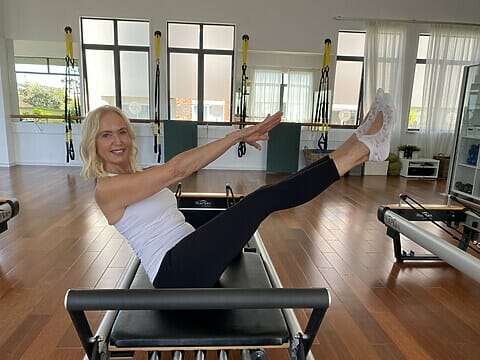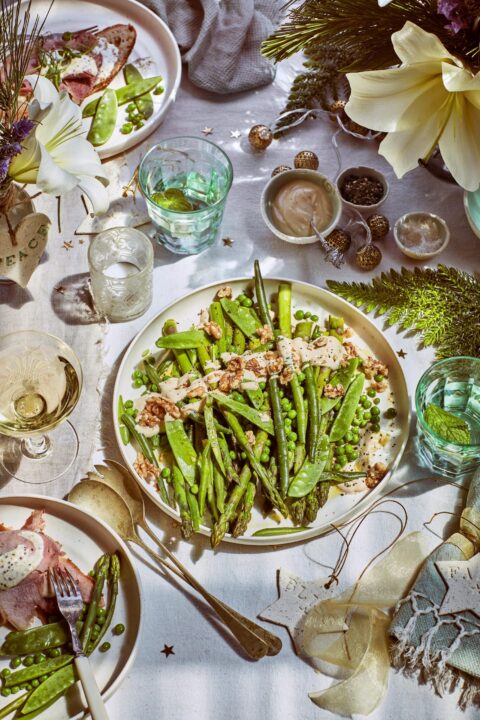Cappellacci is similar to tortellini, though a little easier. Instead of cutting the pasta sheet into little ‘rounds’ before you fill them, you make little squares of pasta. The little triangle ‘caps’ left on the pasta help me to remember its name. This is a great recipe to make extra of. Freeze the uncooked cappellacci on a tray, then transfer to a bag once frozen. This stops them clumping together. They’ll take about 6 minutes to cook from frozen. I love the browned butter and sage combination with pumpkin and it is seasonally ideal, because the pumpkin and sage are ready in the garden at the same time.
This is a recipe extracted from Nostrana created by ex Chef Bri DiMattina (below), Nostrana shares simple, gorgeous and delicious recipes with fresh vegetables and fruits you can easily grow and harvest yourself.

Bri DiMattina, a second-generation Italian-Kiwi, is a home gardener and trained chef who was inspired by her chef mother and Italian nonna’s passion for great food. Following a career in the food industry, Bri relocated to Mangere Bridge with her partner and son, where she began cultivating a ‘food forest’ using permaculture methodologies. She now delights in harvesting and cooking homegrown produce.
Ingredients
- 500g butternut pumpkin, halved, seeds discarded
- 2 tsp olive oil
- 80g finely grated parmesan
- 2 tbsp fine breadcumbs
- Pinch of ground nutmeg
- Pasta dough (recipe below)
Browned Butter and Sage Sauce
- 80g butter
- Handful of sage leaves (about 20, or more)
- 1/2 tsp lemon juice
Method
- Preheat the oven to 200°C fan-forced. Brush the cut side of the pumpkin with oil and season with salt and pepper. ‘
- Place in roasting pan cut-side down and cook for about 40 minutes, until the pumpkin is tender and the skin is soft. Set aside to cool, then remove the skin. Mash the pumpkin in a bowl with the parmesan, breadcrumbs and nutmeg. Season to taste.
- Roll the dough as directed on page 239, finishing at the second last setting. Cut the dough into 7cm squares.
- Place a little pumpkin filling into the centre of each square. Moisten the edges with water then fold over to form a triangle.
- Press the dough together around the filling and try to avoid any trapped air bubbles. Bring the two furthest corner points together and press together to create a little ring. Place on a floured tray until you are ready.
- Bring a large saucepan of salted water to the boil. Cook in batches for 2–3 minutes, until al dente.
- While they are cooking, to make the sauce, heat the butter in a large pan, until melted and starting to brown slightly. Add the sage leaves and cook until crisp. Stir in the lemon juice.
- Add the cooked cappellacci and gently toss together. Serve immediately.
Pasta
The thing about pasta, in my family at least, is that it is the number one way to eat less meat. They truly don’t seem to notice when I’ve combined fresh homemade pasta with garden goodies, such as peas and parmesan or tomato and anchovy, or even something as simple as basil pesto tossed through with a little cracked pepper on top.
Serves 6
Ingredients
- 4 cups (600g) 00 flour
- 5 eggs
- ½ tbsp olive oil
Method
- Place the flour into a mound on the bench and make a well in the centre. Add the eggs and the olive oil. Using a fork (or by hand) slowly start to mix the eggs and the oil, incorporating the flour on the inside of the mound as you go.
- The dough will slowly start to come together. Once the flour has all been incorporated, start kneading the dough with the heel of your hand. If it is sticky, add a little flour to the bench and continue to knead for a good 10 minutes. The dough should be soft, elastic and just a little sticky.
- Cover with a damp cloth and let it rest for 30 minutes.
- Cut the dough into 8 pieces. Shape 1 piece into a rough rectangular shape and dust generously with flour. Starting on the widest setting of the rollers on the pasta machine, feed the dough through.
- Fold into thirds and feed it through again the other way (starting at the shortest side). Do this a couple of times, dusting with flour as necessary.
- Change to the next setting on the pasta machine, and roll the dough through. Change to the next setting and roll again, without folding. Keep rolling, reducing the setting each time and finishing at your desired thickness (it will depend on how you are going to use the pasta). Repeat with the remaining dough and cut into desired shapes.








